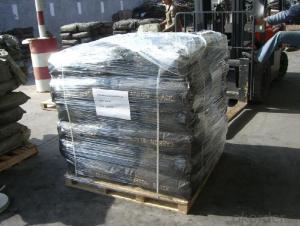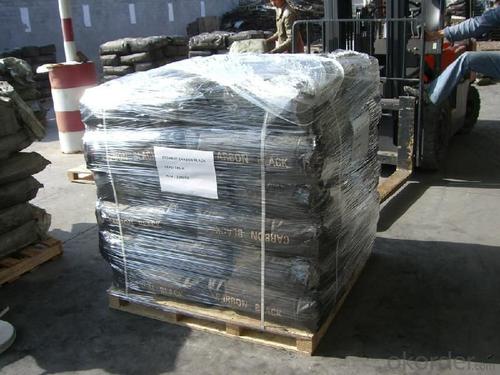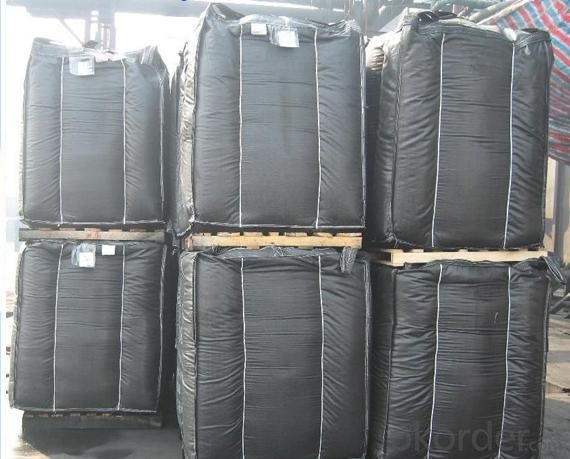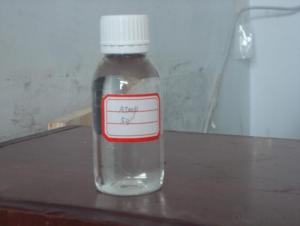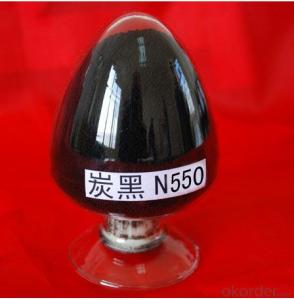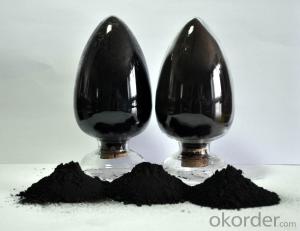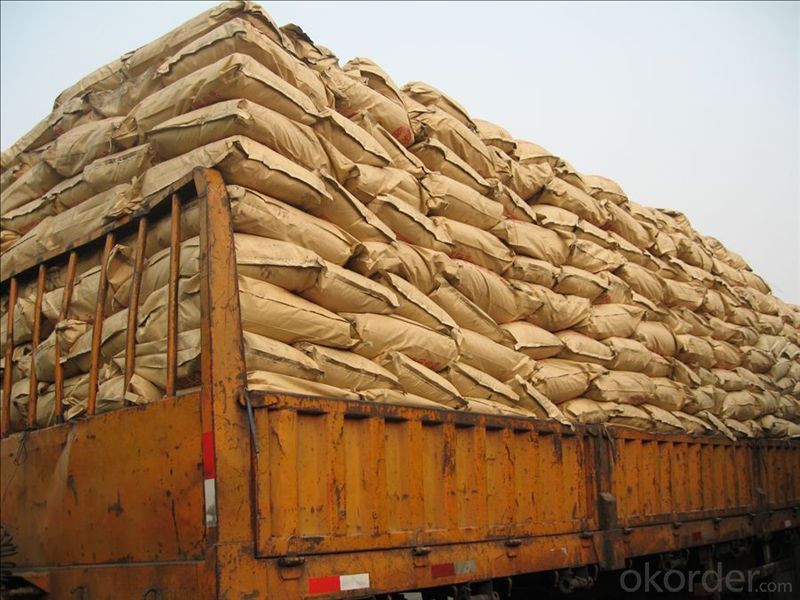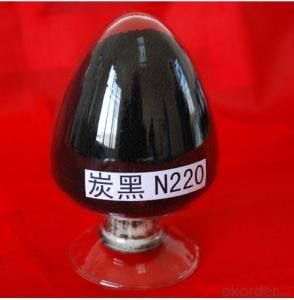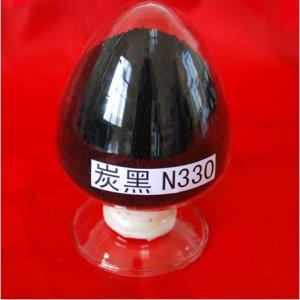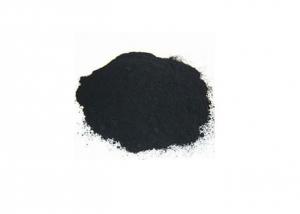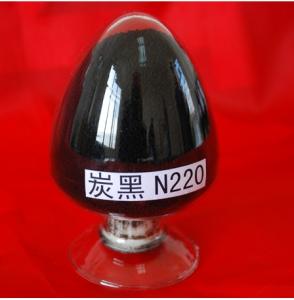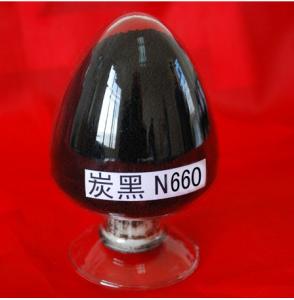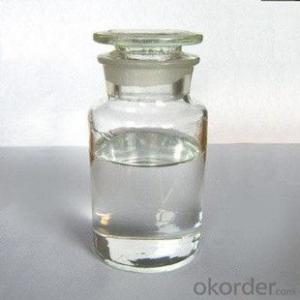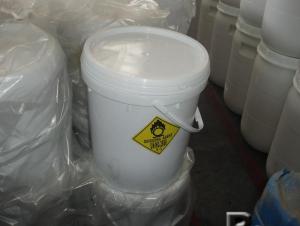Selling Carbon black use N220 n330 n550 n660
- Loading Port:
- Qingdao
- Payment Terms:
- TT OR LC
- Min Order Qty:
- -
- Supply Capability:
- 20000 m.t./month
OKorder Service Pledge
OKorder Financial Service
You Might Also Like
Specifications
Selling Carbon black use N220 n330 n550 n660 /1333-86-4
1.competitive price
2.high quality
3.wide specifications
Selling Carbon black use N220 n330 n550 n660 /1333-86-4
1.Basic information:
1. Carbon Black N220, N326, N330, N375, N539, N550, N660, N774 also available;
2. For more details(Carbon Black MSDS), please do not hesitate to contact us.
3.We holding the princple of " Profession, Speedy, Sincerity" with your questions and inquiries.
So if you are interested in any product we are supplying or we could supply, your inquiry will always meet our prompt reply!
2.Specification:
Name ,Parameter | Carbon black N220 | Carbon black N330 | Carbon black N550 | Carbon black N660 |
Loding Absorption Number(g/Kg) | 114-128 | 77-87 | 39-47 | 32-40 |
Absorption Value of DBP (10-5m3/Kg) | 109-119 | 97-107 | 116-126 | 85-95 |
Absorption Value of compressing sample DBP (10-5m3/Kg) | 95-105 | 83-93 | 83-93 | 71-79 |
Adsorptive Specific Surface Area of CATB ( 103m2/Kg) | 106-116 | 77-87 | 38-46 | 32-40 |
Adsorptive Specific Surface Area of Nitrogen (103m2/Kg) | 114-124 | 78-88 | 38-46 | 30-40 |
Tinting Strength % | 110-120 | 98-108 | ---- | ---- |
Heating Loss | 2.5%max | 2.5%max | 1.5%max | 1.5%max |
Ash Content | 0.5%max | 0.5%max | 0.5%max | 0.5%max |
Tensile Strength | -0.5mpa min | -0.5mpa min | -0.5mpa min | -0.5mpa min |
300% Extending Stress | -1.5±1.0 mpa | -1.0±1.0 mpa | -1.0±1.0 mpa | -2.5±1.0 mpa |
45μm Sieve Residue | 0.10% max | 0.10% max | 0.10% max | 0.10% max |
- Q: Why the amount of catalyst is too small will make the chemical reaction rate slowed down
- Whether the chemical reaction can be carried out according to the change of free energy, but only according to the change of free energy can not determine whether the reaction can be completed, because the chemical reaction is also completed by the reaction of the energy barrier, that is, if the reaction energy barrier is high, To provide some energy, across the barrier, to complete the reaction. The energy barrier is called activation energy. And the role of the catalyst is to reduce the activation energy, so that in a relatively harsh environment, chemical reaction occurs.
- Q: Hydrogen and oxygen in the role of the catalyst can do the chemical formula of aviation fuel?
- Do not be irresponsible, rocket fuel is hydrogen peroxide. H2 + O2 = H2O2 (catalyst)
- Q: Which branch of chemistry or what specialty can study the catalyst
- Organic Chemistry: Application of Inorganic Catalysts in Organic Reactions, Preparation and Application of Organic Catalysts (such as Macromolecular Resins, Phase Transfer Catalysts), Preparation and Application of Catalysts for Organic Compounds
- Q: Exemplify the use of green catalysts in green chemistry
- Catalyst does not participate in the reaction If you ask the green oxidizer, then there is hydrogen peroxide catalyst is the quality of reactants before and after the change
- Q: Is the catalyst in the field of inorganic chemistry?
- In the chemical discipline, including inorganic chemistry, analytical chemistry, organic chemistry and physical chemistry and other secondary disciplines, catalytic science for the three disciplines, generally attributed to the physical chemistry of the mouth.
- Q: Will the chemical catalyst not reduce that?
- Why is it done? Although the catalyst does not react chemically, the catalyst itself is deteriorated and is not always used
- Q: Could you please explain it, i know they increase reaction rates but how?
- A catalyst lowers the activation energy (the minimum amount of energy needed for a reaction to take place). This means that the particles can react with less energy than they needed before the catalyst was added. (Think about it: if the government lowered the legal age to buy cigarettes, then more people could legally buy cigarettes. Similarly, if we lower the amount of energy needed for particles to react, then more particles can react). Also, a catalyst provides a surface on which the reaction can take place. This increases the number of collisions between the particles of the substances that are reacting.
- Q: the heterogenous catalyst ZSM-5 IS used to convert ?
- Zeolite-based heterogeneous catalysts are used by industrial chemical companies in the interconversion of hydrocarbons and the alkylation of aromatic compounds. A very good example is the zeolite ZSM-5. This zeolite, developed by Mobil Oil, is an aluminosilicate zeolite with a high silica and low alumininum content. Its structure is based on channels with insecting tunnels. The aluminium sites are very acidic. The substitution of Al3+in place of the tetrahedral Si4+ silca requires the presence of an added postive charge. When this is H+, the acidity of the zeolite is very high. The reaction and catalysis chemistry of the ZSM-5 is due to this acidity. The ZSM-5 zeolite catalyst is used in the petroleum industry for hydrocarbon interconversion. An example use is in the isomerizations of xylene- from meta to para-xylene. The acidic zeolite promotes carbocation isomerizations. There are two suggested mechanisms for this type of isomerizations. Firstly shape may play a role. Perhaps para-xylene has a shape which allows it to diffuse rapidly through the zeolite structure, whereas as meta-xylene takes longer to pass through the zeolite and thus has more opportunity to be converted into the para-xylene. Secondly, is that the orientation of reactive intermediates within the zeolite channels favors specifically para-xylene.
- Q: I have just spent CAN$550 to replace a catalyst converter at one end of the muffler. The repairman said I need to replace the oxygen sensor very soon, otherwise, the C.C. will be gone again. Is that true... can someone confirm this for me. Thanks.
- With a four cylinder engine, the code definition should have read: B1S1 (for the upstream sensor responsible for fuel/air ratio monitoring) or B1S2 (for the sensor downstream of the catalytic converter, which only monitors that part). If you changed the front (S1) sensor and you still have a code for it, save your old sensor as there may be nothing wrong with it. If the code is for the O2 sensor heater, check your fuses. If not, the code is probably a symptom of another problem, such as a misfire, restricted fuel filter or intake air leak. Is this the same code you got previously? Did you install a direct-fit replacement or a universal sensor that had to be configured for your honda's wiring connector?
- Q: Why would the Eact decrease if a catalyst is added?
- A catalyst by its very nature increases the rate of reaction by binding to a reactant, hence changing its shape and reactivity with other reactants. However, the catalyst is neither consumed nor will it change the chemical shape of the products.
Send your message to us
Selling Carbon black use N220 n330 n550 n660
- Loading Port:
- Qingdao
- Payment Terms:
- TT OR LC
- Min Order Qty:
- -
- Supply Capability:
- 20000 m.t./month
OKorder Service Pledge
OKorder Financial Service
Similar products
Hot products
Hot Searches
Related keywords
